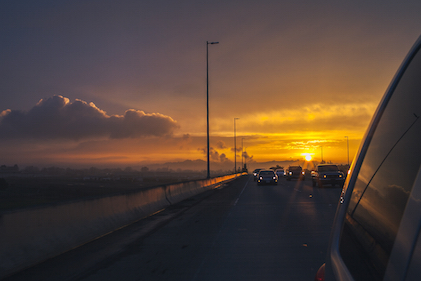The Takedown
Appealing Photo Radar Cases
The Gillespie Case Changed Everything
Craig Gillespie received a photo radar ticket in the mail accusing him of speeding. Well-known as a criminal defense attorney Craig Gillespie requested a hearing. He asked the court to dismiss his case because of a number of jurisdictional issues including that a computer-generated signature appeared on the ticket. Gillespie argued that a real signature was required since the ticket contained a certification made under oath. The court denied his motion to dismiss and found him responsible for speeding. Gillespie then hired Susan Kayler to write the appeal. The work of these two attorneys changed the procedures Arizona follows to issue photo radar tickets.
At his hearing in Scottsdale City Court, Craig Gillespie asked the court to dismiss his case saying that it lacked jurisdiction since the complaint was filed with a computer-generated signature. Gillespie objected because no one reviewed the tickets which "certified" that the registered owner was driving. There was no comparison made between the photo radar picture and identifying information, such as a driver's license, to assure that the person named in the ticket was the person driving. When Gillespie lost his case at trial, an appeal was filed and decided in his favor. In her decision, the Honorable Margaret H. Downie wrote:
Under this system, no one can certify with the slightest degree of accuracy or truthfulness that the person receiving the ticket is the actual driver. There is no human involvement in the certification process whatsoever. The procedure clearly violates A.R.S. § 28-1561. As such, the traffic complaint entered in this matter failed to confer jurisdiction on the trial court.
Judge Downie ordered the case dismissed. The news media picked up the story and cities were clearly on the hot seat to make changes. Although citations continued to be issued without any comparison to a driver's license, defendants continued to appeal until changes were implemented. You can read the Gillespie case here.
More Photo Radar Appeals
Susan Kayler wrote the appeal for a client who appeared in court and attempted to set aside a default because she was not the driver. The court refused to hear her evidence. On appeal the court held that her evidence was enough to have set aside the default. Her fine was reversed and the complaint dismissed. Read the case here.
One business owner hired Susan Kayler to appeal his case after he received a photo radar ticket. He was not the driver even though he was named and the complaint was signed under oath. He told the city the name of the actual driver yet the court defaulted his ticket anyway and told him to immediately pay the fine or his license would be suspended. On appeal, he won the case with the court saying that it was obvious he was not the driver and that the trial court should have set aside his default. Read the decision here.
Not all photo radar appeals are reflected here. Susan Kayler coached many appellants on how to handle their appeals with most of them successful. Some appeals, such as those challenging "alternative" service, did not succeed, however the Arizona State legislature passed a law that went into effect on July 3, 2015 tightening the restrictions on such service and increasing requirements for valid alternative service.
Appeal issues:
- Computer-signed complaint
- Inadequate identification of driver
- Insufficient service
- Not the driver
- Setting aside default
After Gillespie
Photo radar procedures changed. Drivers avoided mailed tickets. The case had an impact.
- The Gillespie case has been cited by the appellate court in a number of later appeals
- The court cited Gillespie in State of Arizona vs. Jaime Rebecca Morone
- Read other photo radar appeal cases at PhotoRadarLaw.com's appeal page



